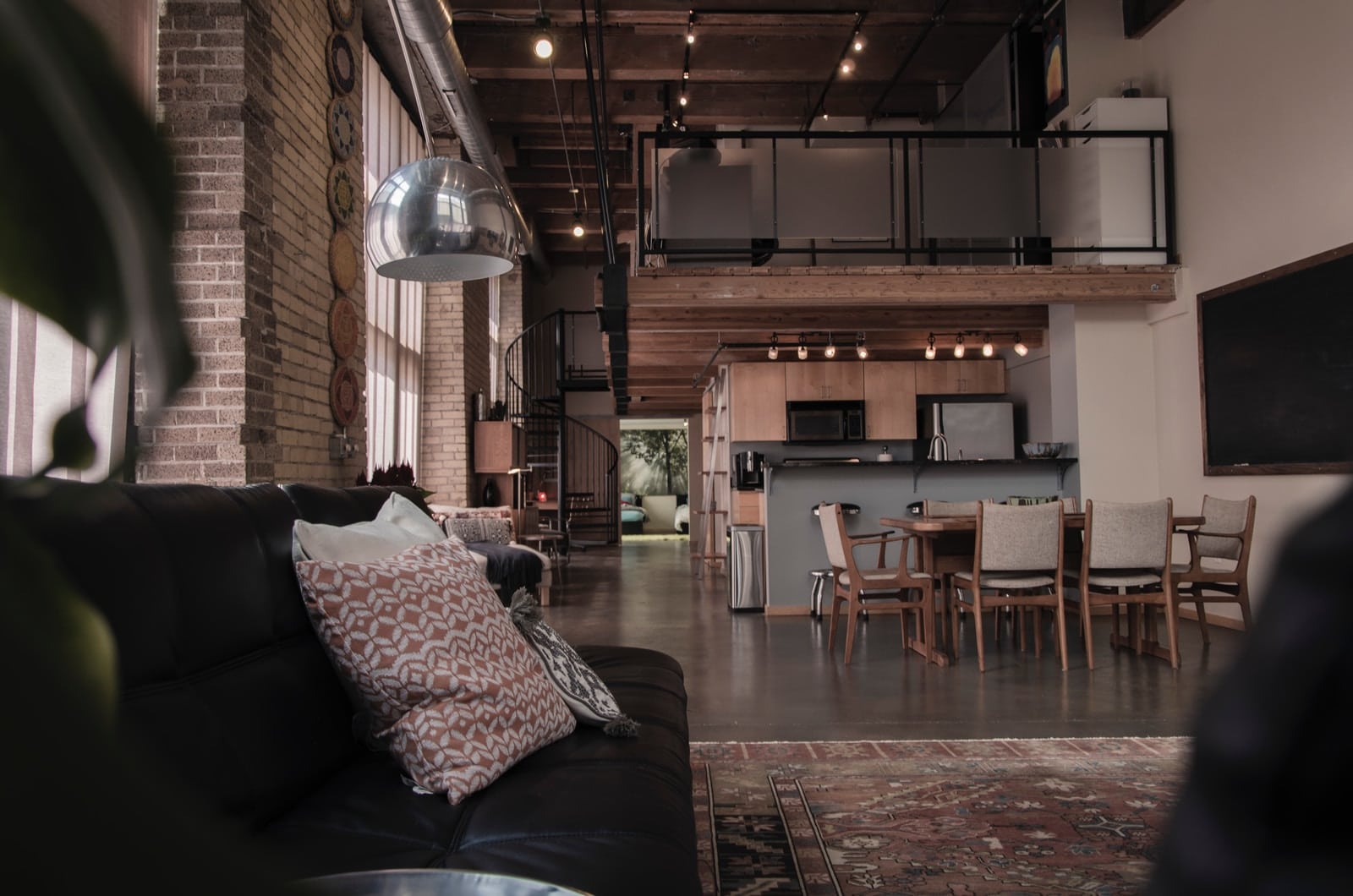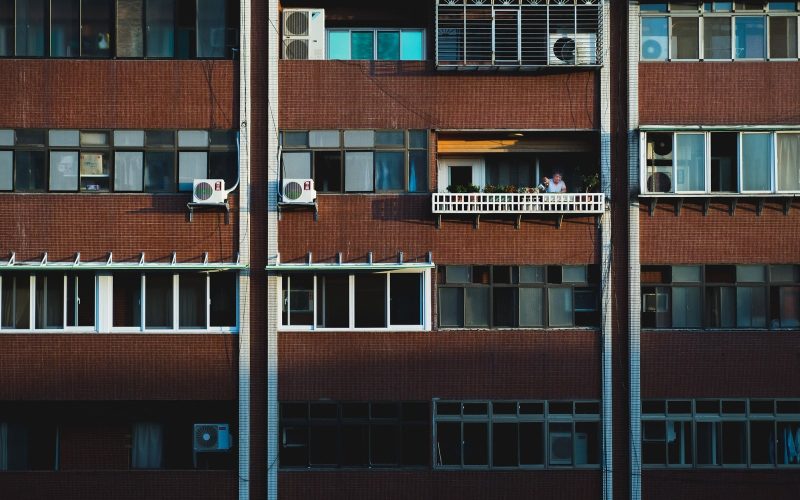Understanding the different types of apartments, including their size and layout, will help you make the most of your time picking which sites to stay in.
While looking for the ideal apartment, you might have a list of things you can’t live without, such as natural light, brand-new appliances, or lots of space for your pet.
However, before you begin looking around your target city and neighborhood, you must first choose which of the different types of apartments best suits your lifestyle and budget.
Because there are so many different types of apartments to consider, determining the ideal type of apartment for you might be difficult.
We’ve put together a reference to the different types of apartments to assist you in finding one that meets your needs and exceeds your expectations.
1. Studio

A studio apartment is a one-room apartment with a bathroom. As a result, the single space serves as a kitchen, living area, and bedroom.
In some locations, a studio is referred to as “efficiency.” Studio apartments are certainly efficient—due to their modest size, they cost less heat and power than other units.
Furthermore, Studio apartments are a great option if you don’t require a lot of space. Just make sure you have everything you need in the kitchen, as some studios have a kitchenette and no oven or full-sized refrigerator.
2. Micro-Unit
Depending on where you are looking for an apartment you may come across the terms “micro-apartments” or “micro-units,” depending on where you are looking for an apartment.
Micro-units are used in urban areas to squeeze a more significant number of dwellings into a rental unit. Micro-apartments are one-room living units that are typically smaller than 350 square feet.
A seating and sleeping area, a kitchenette, and a separate bathroom are common features of micro-units. They may have a pull-down bed, a futon, and smaller equipment for sleeping and sitting.
Micro-apartment buildings are common in densely populated areas like New York City, San Francisco, Boston, Indianapolis, and Seattle.
Because living quarters are limited, some micro-apartments provide on-site laundry or storage. This is one of the different types of apartments.
3. Loft

A loft apartment is a vast, open space with high ceilings. Tall windows, exposed bricks, and visible support beams are possibilities for the loft.
Lofts are standard in commercial buildings that have been converted into residential apartment units. They are usually large, with over 1,000 square feet of living area.
While lofts are similar to studio apartments, including one open room and a bathroom, they often cost significantly more to rent because the area is much larger and more open.
Because lofts offer so much floor space, some renters divide the space using temporary walls, screens, or room dividers. Also, you can even use a bookcase to divide a large residence into smaller areas artistically.
4. Luxury Apartment
A luxury apartment is often an ample, high-end living space in a prime urban location.
Also, High-end apartment community amenities such as gyms, laundry facilities, lounges, parking garages, swimming pools, and a doorman are prevalent in luxury apartments.
If you want to start living in the city, you should know that luxury apartments can be expensive, but they come with top-of-the-line equipment, various floor plans, high ceilings, design, and convenience.
5. Co-op Homes
Purchasing a co-op includes purchasing shares in an organization that owns your space rather than owning your property. The more area you have in your home, the more claims you will have.
In co-ops, you are liable for building maintenance fees, including property taxes, management fees, energy, gas, and other costs. Prices vary depending on the size of the apartment unit and can change over time.
6. Duplex Or Triplex
A duplex is a multi-family dwelling comprising two different living units in one structure. Each dwelling unit has its door and often includes two levels of living area.
The units are roughly the same size and are frequently mirror reflections of one another. A triplex is similar to a duplex, but instead of two apartments, it has three.
7. Walk-Up
The terms used to describe various residences can also refer to how you get into them. Walk-up apartments are only accessible by stairs and do not have an elevator.
Because it can be difficult to find renters willing or able to go up multiple flights of stairs to get to their apartment, they may be less expensive to rent than flats in buildings with elevators.
A walk-up apartment can be a loft, a studio, or a multi-bedroom unit with any floor layout. Walk-up units are frequent in older multi-family houses with four to six stories.
A walk-up apartment may allow a renter to choose an apartment in town close to shops and restaurants because the rent is usually slightly less expensive than that of a finer condo.
While having a walk-up apartment has many advantages, moving items up to the flat might be difficult. Also, examine how easy it will be to get your furnishings into a walk-up unit when contemplating one.
In addition, if you have heavy furniture and limited space to transfer it up the stairs, hiring professional movers may be the best option. This is one of the different types of apartments.
8. Garden Apartments
A garden apartment is a ground-floor or basement apartment with direct access to a private outdoor area.
Many garden apartments on the ground level offer patios or porches where occupants can build an outdoor living area for sitting or gardening.
Although some garden apartments do not have direct access to a garden or outside area, most renters have access to some form of green space.
While a garden apartment may be less expensive than other apartments, it’s crucial to investigate it thoroughly and look for security features, especially if it’s below ground level.
Before renting a garden apartment, look for wetness or a musty odor. This is one of the different types of apartments.
9. Railroad Apartment

The distinctive floor design of a railroad apartment gives it its name. However, they are commonly composed of three or four rooms joined in a long, narrow rectangle.
This design is especially common in smaller, older structures. A railroad apartment’s bedrooms might be at either end or in the middle of a row of rooms.
10. One-Bedroom Apartment
A one-bedroom apartment typically comprises three rooms: a living area, a kitchenette, and a bedroom. It should also include a full bathroom.
11. Junior 4
A junior 4 apartment is halfway between a one-bedroom and a two-bedroom unit. Aside from the bathroom, it features four rooms: a kitchen, a living room, a bedroom, and office area.
Because the office generally lacks its window, these units cannot legally be rented as two bedrooms. This is one of the different types of apartments.
12. Two-bedroom Apartment
A two-bedroom apartment includes four rooms similar to the one above, except both bedrooms have windows. These are ideal for roommates, and the second room may be anything from an office to a children’s playroom.
13. High-Rise Apartment
Ten or more stories make up high-rise structures, mostly occupied by tenants (although the building could also have commercial space on the first floor or two).
Living in a high-rise, you’ll run into your neighbors in the halls, elevators, and laundry rooms. However, these structures are noisier and busier, providing more amenities.
14. Low Rise Apartment
Apartment buildings of 2 to 9 stories are considered minor. A low-rise building has two to five levels (and may have only a few flats), whereas a mid-rise structure might have up to nine floors and dozens of tenants.








